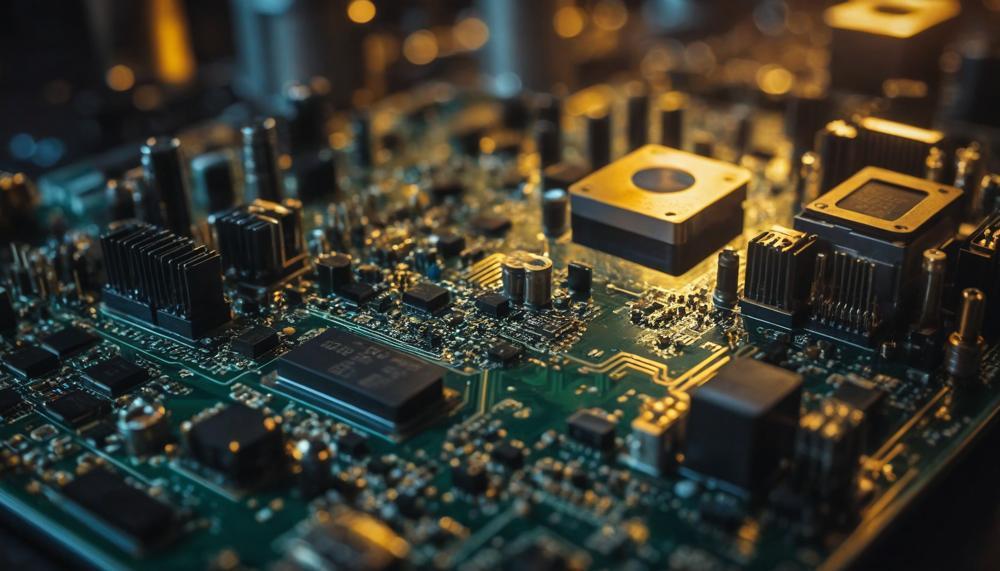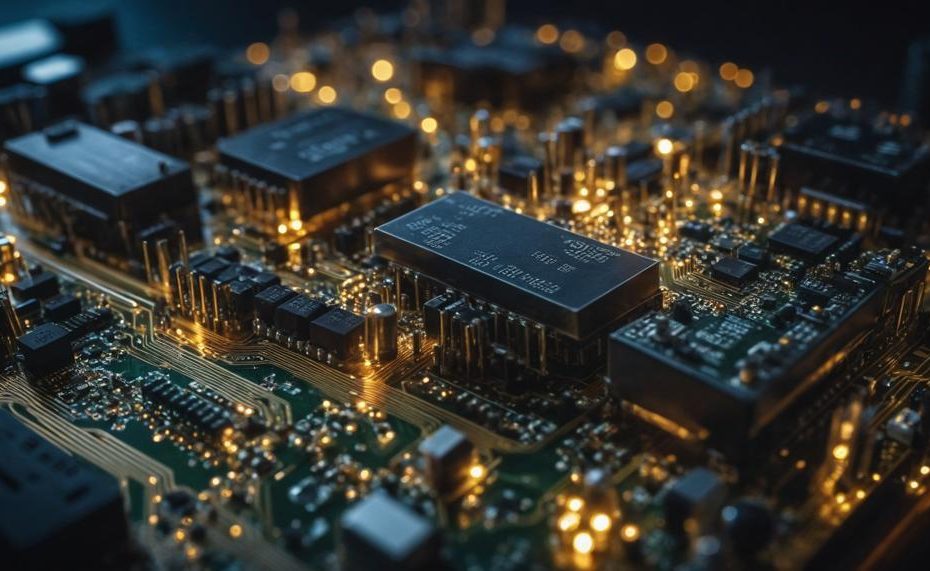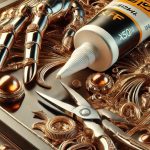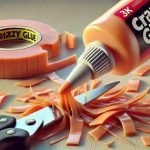No, you should not use hot glue directly on a circuit board.
While hot glue may seem like a convenient and inexpensive option for securing components and cables, it can be problematic and potentially damaging to electronic circuits, especially those with sensitive components like MOSFETs and integrated circuits (ICs).

Here are the key points to consider:
- Hot glue can be electrostatic, which means it can carry an electrical charge capable of damaging or disrupting the operation of electronic components.
- Direct contact between hot glue and circuit board components or pins can lead to short circuits, corrosion, or insulation failure over time.
- The heat from the hot glue application process can also potentially damage temperature-sensitive components on the board.
While it may be tempting to use hot glue for a quick fix, it’s generally not recommended for use on circuit boards. Instead, consider using non-conductive adhesives or methods specifically designed for electronic applications to ensure the safety and longevity of your circuits.
Don’t risk ruining your valuable electronics. Explore the array of specialized tools and techniques available for properly securing components on circuit boards. A little extra effort now can save you from costly repairs or replacements down the line.
Table of Contents
Understanding the Nature of Hot Glue
| Hot glue, technically termed as thermoplastic adhesive, primarily comprises thermoplastic polymers like ethylene vinyl acetate (EVA) and polyamides. These polymers melt upon heating and solidify upon cooling, providing a strong adhesive bond. Additionally, hot glue contains tackifiers (e.g., resins) to enhance adhesion, stabilizers for thermal stability, and other additives to modify properties like flexibility, color, or strength. |
| When applied to a circuit board, hot glue can potentially cause issues due to its insulating nature and electrostatic properties. The non-conductive nature of hot glue may interfere with electrical connections or short-circuit components if applied carelessly. Furthermore, the electrostatic charge generated during application can damage sensitive electronic components like MOSFETs and integrated circuits (ICs). |
| Therefore, while hot glue offers a strong adhesive bond, its application on circuit boards requires caution. It’s advisable to avoid direct contact with exposed pins, traces, or components to prevent electrical shorts or electrostatic discharge (ESD) damage. Proper grounding techniques and ESD-safe practices should be followed when using hot glue near sensitive electronic circuits. For critical applications, specialized non-conductive adhesives designed for electronics may be a safer alternative. |
The Risks of Using Hot Glue on Circuit Boards
The potential risks and dangers of using hot glue on circuit boards are significant and should not be overlooked. Hot glue is not designed for use with electronics, and its application on circuit boards can lead to various issues that may compromise the functionality and longevity of the device. Here is a detailed overview of the risks involved:
| Risk | Description | Potential Consequences |
|---|---|---|
| Thermal Stress | Hot glue guns typically operate at temperatures ranging from 200°C to 300°C (392°F to 572°F). Exposing delicate electronic components to such high temperatures can lead to thermal stress and damage. | Overheating, component failure, shortened lifespan, and potential fire hazards. |
| Lack of Electrical Conductivity | Hot glue is an insulator, meaning it does not conduct electricity. Applying it to circuit boards can disrupt the flow of electrical signals and create unintended open circuits. | Malfunctions, short circuits, and complete failure of the device or specific components. |
| Material Incompatibility | Circuit boards often contain non-conductive materials like fiberglass, epoxy resins, and plastics. Hot glue may react with or degrade these materials, compromising their integrity. | Delamination, warping, cracking, and potential chemical reactions that can lead to component failures. |
| Repair and Modification Difficulties | Once hot glue dries and hardens on a circuit board, it can be challenging to remove or rework components without causing further damage. | Increased repair costs, potential component damage during removal attempts, and limited ability to modify or upgrade the device. |
| Inadequate Insulation | Hot glue may not provide sufficient insulation or protection for sensitive components, leaving them vulnerable to electrical interference, static discharge, and environmental factors. | Electromagnetic interference, data corruption, and premature component failure due to exposure to moisture, dust, or other contaminants. |
Advantages of Using Specialized Adhesives for Circuit Boards and Electronics
The advantages of utilizing specialized adhesives designed for circuit boards and electronics, as opposed to employing conventional hot glue, are manifold and paramount. These specialized adhesives are meticulously engineered to safeguard the delicate components and intricate circuitry, ensuring optimal performance and longevity. Here are the key benefits:
| Benefit | Description | Importance |
| Non-conductive | Specialized adhesives are formulated to be non-conductive, preventing electrical shorts and ensuring the smooth flow of current within the circuit board. | Crucial for maintaining the integrity of electronic signals and preventing potential damage or malfunctions. |
| Thermal stability | These adhesives can withstand a wide range of temperatures without degrading or compromising their adhesive properties, making them suitable for high-heat environments. | Essential for electronic devices that generate heat during operation, ensuring long-term reliability and preventing premature failure. |
| Chemical resistance | Specialized adhesives are designed to resist chemical attacks from solvents, acids, and other corrosive substances, protecting the circuit board components. | Vital for maintaining the structural and functional integrity of electronic devices, especially in harsh environments or applications. |
| Precise application | These adhesives often come in specialized dispensing systems, allowing for precise and controlled application, minimizing the risk of contamination or excess material. | Crucial for maintaining the cleanliness and accuracy of the assembly process, preventing potential short circuits or other issues. |
| Material compatibility | Specialized adhesives are engineered to be compatible with the materials used in circuit boards and electronic components, ensuring a strong and reliable bond. | Essential for ensuring the long-term durability and integrity of the assembly, preventing delamination or other failures. |
In contrast, hot glue, while inexpensive and readily available, lacks these critical properties and can pose significant risks to electronic devices. It may become conductive at high temperatures, potentially causing shorts or interfering with electrical signals.
Types of Adhesives for Circuit Boards and Electronics
When working with circuit boards and electronics, it’s crucial to use adhesives that are compatible with sensitive components and won’t compromise functionality. Here are some common types of adhesives suitable for these applications:
| Adhesive Type | Description | Advantages |
|---|---|---|
| Epoxy Resin | A two-part adhesive that cures into a rigid, strong bond. |
|
| Acrylic | A single-component, fast-curing adhesive that forms a flexible bond. |
|
| Silicone | A flexible, rubber-like adhesive with excellent heat and chemical resistance. |
|
Hot glue guns, while convenient for crafts and non-electronic projects, are generally not recommended for use with circuit boards and sensitive electronic components. The adhesive used in hot glue guns can potentially cause issues like electrostatic discharge (ESD), which can damage or degrade electronic components.
For circuit boards and electronics, it’s advisable to use specialized adhesives designed for these applications, as they are formulated to minimize risks like ionic contamination, outgassing, and ESD.
How to Use Adhesives on a Circuit Board
When working with circuit boards, selecting the right adhesive and applying it properly is crucial to ensure optimal performance and longevity. Here are some of the best types of adhesives and application methods for circuit boards:
| Adhesive Type | Description | Application Method |
|---|---|---|
| Epoxy | Offers strong bond strength, chemical resistance, and excellent electrical insulation properties. Ideal for bonding components to PCBs. | Apply with a precision dispensing system or manually with a syringe or toothpick. Cure at room temperature or with heat, depending on the formulation. |
| Silicone | Provides flexibility, high-temperature resistance, and good electrical insulation. Suitable for bonding components in high-heat environments. | Dispense using a caulking gun or precision applicator. Cures at room temperature or with heat acceleration. |
| Acrylic | Resists vibrations, thermal cycling, and moisture. Good for bonding components in harsh environments. | Apply with a syringe or precision dispensing system. Cures with UV light or heat, depending on the formulation. |
| Cyanoacrylate (Super Glue) | Quick-setting and provides a strong bond. Ideal for electronic repairs and temporary bonding. | Apply in small amounts using a precision applicator or toothpick. Cures rapidly upon contact with moisture. |
When applying adhesives to circuit boards, it’s essential to follow these best practices:
- Clean the surfaces thoroughly to remove any contaminants that could interfere with the bond.
- Use a precision dispensing system or applicator to apply the adhesive in controlled amounts, avoiding excess that could cause electrical shorts or interfere with components.
- Follow the manufacturer’s instructions for curing times and conditions (e.g., heat, UV light, or room temperature).
- Consider using a conformal coating or encapsulant to provide additional protection against moisture, chemicals, and environmental factors.
- Avoid using hot melt adhesives or other electrically conductive materials that could create short circuits or interfere with the circuit’s operation.
Conclusion
The risks of applying hot glue directly to circuit boards far outweigh any perceived convenience or cost savings. The high temperatures can thermally shock delicate components, while the glue’s slight conductivity when molten risks creating unintended shorts or electrical interference. Even when fully cured, hot glue lacks the adhesive strength, heat resistance, and insulating properties required for electronic applications.
A single misplaced drop of hot glue could potentially damage sensitive ICs, corrode connections over time, or disrupt signal integrity – jeopardizing your circuit’s performance and longevity. Repairing boards contaminated by hot glue is an uphill battle, often requiring complete replacement of affected components.
Instead of gambling with quick fixes, invest in specialized adhesives engineered explicitly for electronics work. Epoxies, acrylics, silicones and other non-conductive formulations provide robust bonding with the thermal stability, chemical resistance and electrical insulation to safeguard your circuits. Precision applicators allow controlled application without excess that could lead to shorts.
Your electronics deserve professional-grade solutions. Avoid the temptation of hot glue’s siren song and opt for proper materials and techniques.






